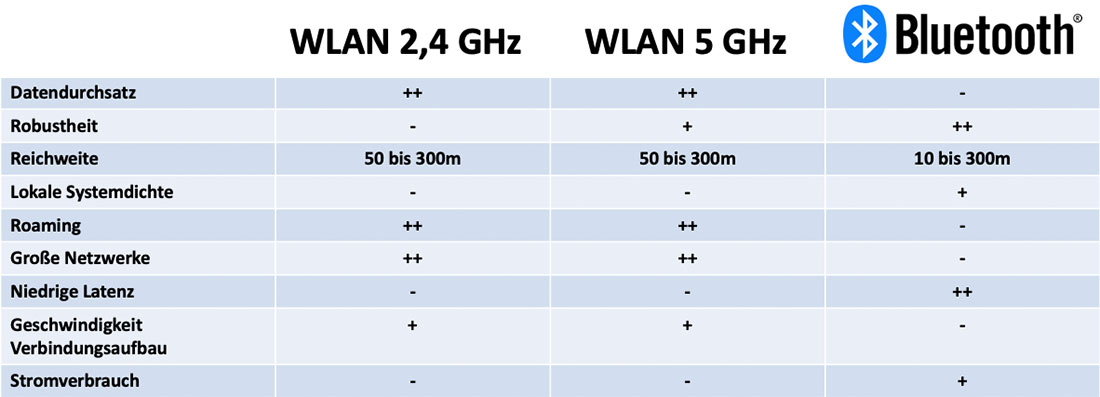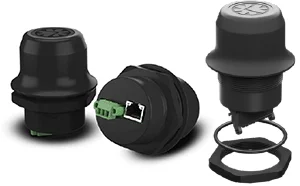Bluetooth basics

Classic Blueooth according to IEEE 802.15.1 was introduced in 1998 and is well suited for the wireless integration of automation devices in series, fieldbus and EtherNet networks. Bluetooth technology is particularly suitable for devices and applications with high safety requirements. Bluetooth devices generally require little space, have low power consumption and are therefore very cost-efficient.
Bluetooth technology features
- Ranges from 10 meters to over 300 meters (long-range module).
- Cyclical and fast transmission of small data packets.
- Maximum data throughput of 780 kbit/s gross (up to ~ 700 kbit/s net).
- With Bluetooth v4.0 + EDR (Enhanced Data Rate), the data throughput is 2.1 Mbit/s gross (approx. 1.5 Mbit/s net).
- Latency from 5 ms to 10 ms.
- 128-bit encryption provides protection against eavesdropping.
- High system density - multiple wireless devices can be connected in the same wireless environment and work flawlessly.
- Robust transmission concept, with functions such as "Adaptive Frequency Hopping" (AFH), "Forward Error Correction" (FEC) as well as narrow frequency channels and low sensitivity to reflections / multi-pathing
- High availability in consumer products (smartphones, tablets, laptops, etc.).
Bluetooth Low Energy
Bluetooth Low Energy (also: "Bluetooth 4.0/5.0"; formerly marketed as "Bluetooth Smart") was introduced in 2011. The technology has some important limitations but also advantages and differs significantly from other (wireless) technologies.
- Bluetooth Low Energy is ideal for the episodic or periodic transmission of small amounts of data.
- In a Bluetooth application where streaming data is used, classic Bluetooth is preferable as it achieves a much higher throughput.



